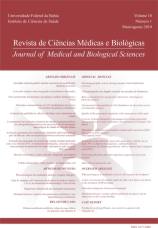Color flow doppler ultrasonography in Hashimoto’s Thyroiditis
DOI:
https://doi.org/10.9771/cmbio.v10i1.4812Keywords:
Thyroid gland, Hashimoto’s thyroiditis, Color flow Doppler sonography, inferior thyroid arteryAbstract
Objective: To evaluate if the vascularization patterns in the thyroid gland parenchyma by the conventional ultrasound mode B, and color Doppler ultrasonography correlated with the peak systolic velocity (PSV) of the inferior thyroid artery using pulsed Doppler in patients with Hashimoto’s thyroiditis (HT) in various stages. Methods: Patients with diagnosis of HT were enrolled in this prospective study in the period two years. Thyroid glands of all patients were evaluated with conventional ultrasound mode B, color-flow Doppler ultrasonography, and peak systolic velocity (PSV) of the inferior thyroid artery. Data were analyzed applying variance (ANOVA) and Pearson’s or Spearman’s correlation. Results: A hundred twenty patients (10 men and 110 women) were included in the study. Highly elevated PSV were associated with very lower thyroid echogenicity and heterogeneous pattern thyroid gland (p= 0.01) and intrathyroidal blood flow (p= 0.004). Conclusions: We conclude that evaluation the vascularization patterns of the thyroid gland parenchyma in patients with HT when compared to conventional ultrasound mode B, and with the PSV of the inferior thyroid artery by pulsed Doppler showed a high correlation. Probably this method could be recommend as a measure of thyroid blood flow as an essential part of evaluating ultrasonography in the HT.
Downloads
Downloads
Published
How to Cite
Issue
Section
License
The Journal of Medical and Biological Sciences reserves all copyrights of published works, including translations, allowing, however, their subsequent reproduction as transcription, with proper citation of source, through the Creative Commons license. The periodical has free and free access.


